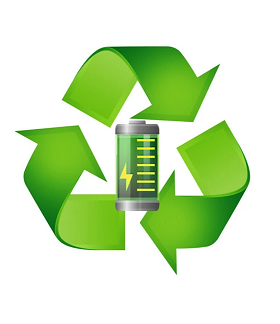
Closing the Loop: The Importance and Process of Recycling Lithium-Ion Cells
Lithium-ion (Li-ion) batteries have become an integral part of our modern life, powering everything from our smartphones to electric vehicles. However, as these batteries reach the end of their life, it is crucial to consider their disposal and, more importantly, their recycling. In this blog post, we delve into the importance of recycling Li-ion cells and examine the recycling process to help reduce waste, conserve resources and protect our environment.
The Importance of Recycling Li-ion Cells
-
Resource Conservation: Li-ion batteries contain valuable materials like lithium, cobalt, nickel, and graphite. Recycling these batteries helps recover these resources, reducing the need for new mining and extraction. Given the limited availability of these resources, recycling plays a vital role in resource conservation.
-
Environmental Impact: Improper disposal of Li-ion cells can lead to hazardous materials leaching into the environment, posing a threat to ecosystems and human health. Recycling helps prevent these risks by safely managing the chemicals and metals within the batteries.
-
Energy Efficiency: Recycling Li-ion batteries consumes less energy than extracting and processing new materials. It's a more energy-efficient way to obtain the same materials, contributing to a reduced carbon footprint.
-
Reduction of E-Waste: The electronic waste (e-waste) problem is growing globally. Recycling Li-ion batteries is an essential step in reducing e-waste and diverting these materials from landfills, where they can take hundreds of years to decompose.
The Recycling Process of Li-ion Cells
Recycling Li-ion batteries is a complex but highly efficient process that involves several stages:
-
Collection: Old Li-ion batteries are collected from various sources, including consumers, businesses, and electronic waste recycling centers. Many manufacturers and retailers also offer take-back programs to facilitate the collection process.
-
Sorting and Preparation: The collected batteries are sorted based on chemistry, size, and type. They are then cleaned and prepared for the recycling process, which includes removing plastics, insulation, and metal components.
-
Mechanical Shredding: The prepared batteries are mechanically shredded into small pieces. This step separates the metal components from the electrode materials.
-
Chemical Processing: The shredded material undergoes a chemical process to extract valuable metals like lithium, cobalt, and nickel. This process typically involves leaching and precipitation.
-
Recovery and Refining: The recovered materials are then refined to meet the necessary purity standards. This refining process ensures that the recycled materials are of high quality and suitable for reuse in battery production.
-
Manufacturing New Batteries: The refined materials can be used to manufacture new Li-ion batteries, closing the recycling loop. The recovered materials are mixed with new materials to create battery components like cathodes and anodes.
Conclusion
Recycling Li-ion cells is not just an environmental responsibility; it's also a smart approach to resource conservation and sustainable living. By recycling Li-ion batteries, we can reduce e-waste, conserve valuable materials, and minimize the environmental impact of battery production and disposal.
As consumers, we can contribute to this effort by responsibly disposing of our old Li-ion batteries in designated recycling programs or drop-off locations. Additionally, supporting policies and initiatives that promote battery recycling and sustainable practices can help create a greener and more sustainable future for all.

















